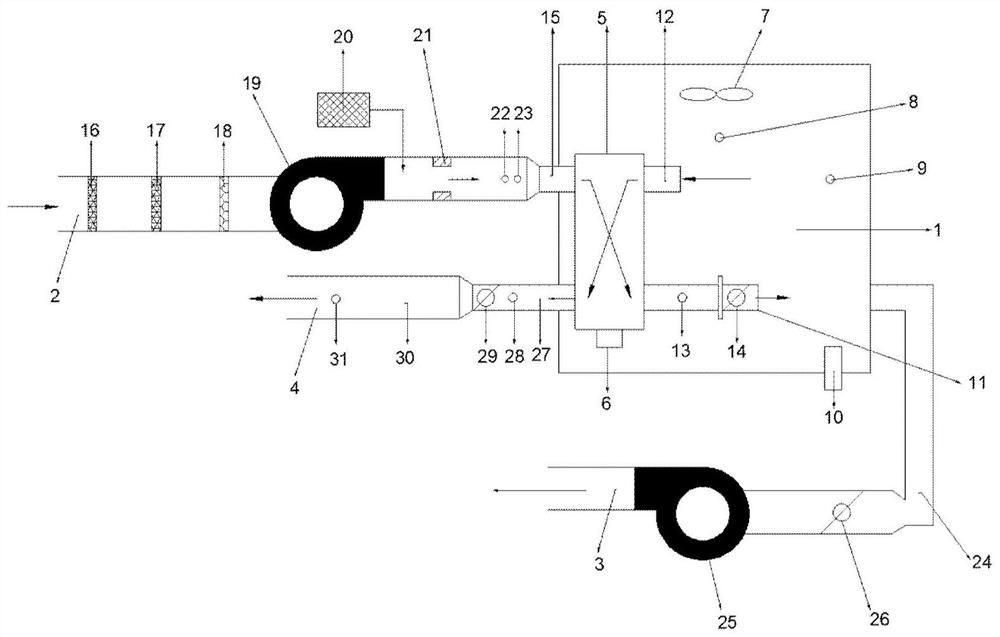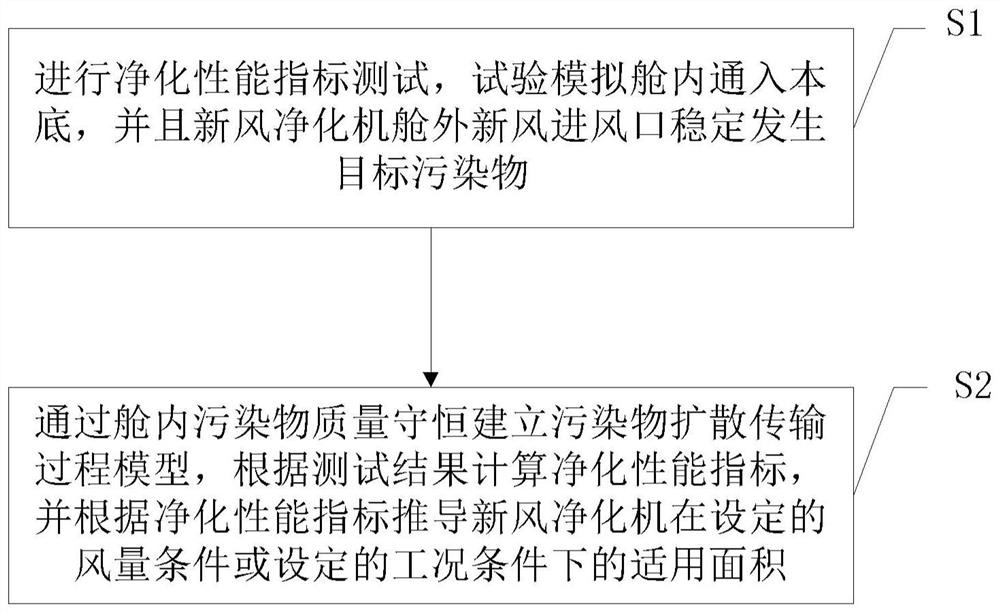A method for determining the applicable area of fresh air purifiers based on purification performance
A purification performance and purification machine technology, applied in the direction of permeability/surface area analysis, machine/structural component testing, suspension and porous material analysis, etc., can solve the problems of evaluation, floor space and energy consumption waste, clean fresh air volume to meet Can not purify the indoor air and other problems, to achieve the effect of accurate and reliable applicable area
- Summary
- Abstract
- Description
- Claims
- Application Information
AI Technical Summary
Problems solved by technology
Method used
Image
Examples
Embodiment 1
[0152] In a first exemplary embodiment of the present disclosure, a method for determining an applicable area of a fresh air purifier based on purification performance is provided. In this embodiment, the standard pollutants are particulate matter as an example: potassium chloride (KCl), the number of particles with a diameter above 0.3 μm, and a mass concentration of 10% KCl. In this embodiment, the performance index is fresh air purification efficiency, and the step S1 purification performance index test includes the following specific test steps:
[0153] Open the test prototype 5, the air blower 19, the auxiliary fan 25, and adjust the pressure difference inside and outside the cabin;
[0154] Turn on the purification system in the test simulation cabin for background purification. After background purification, the number of particles of 0.3 μm and above in the cabin should not exceed 1000 / L;
[0155] Close test prototype 5, air blower 19, auxiliary fan 25;
[0156] T...
Embodiment 2
[0219] In the second exemplary embodiment of the present disclosure, a method for determining the applicable area of the fresh air purifier based on the purification performance is also provided. Different from the first embodiment, the standard pollutant in this embodiment is formaldehyde (indoor pollutant) as an example. For the removal effect of indoor pollutants, the mass conservation equation (1.3) is also applicable, but the indoor source intensity E needs to be supplemented, as follows:
[0220]
[0221] Since indoor pollutants mainly exist indoors, it can be considered that the outdoor concentration C 1 =0, (1.10) can be transformed into,
[0222]
[0223] when steady state
[0224] 0 = -Q R Cε R -k 0 VC-kVC-Q P C+E................................(1.12)
[0225]
[0226] When the doors and windows are closed indoors and the purification device is not used, and the natural attenuation (k=0) is not considered, the release rate of the formaldehyde source...
PUM
| Property | Measurement | Unit |
|---|---|---|
| diameter | aaaaa | aaaaa |
Abstract
Description
Claims
Application Information
 Login to View More
Login to View More - R&D
- Intellectual Property
- Life Sciences
- Materials
- Tech Scout
- Unparalleled Data Quality
- Higher Quality Content
- 60% Fewer Hallucinations
Browse by: Latest US Patents, China's latest patents, Technical Efficacy Thesaurus, Application Domain, Technology Topic, Popular Technical Reports.
© 2025 PatSnap. All rights reserved.Legal|Privacy policy|Modern Slavery Act Transparency Statement|Sitemap|About US| Contact US: help@patsnap.com



